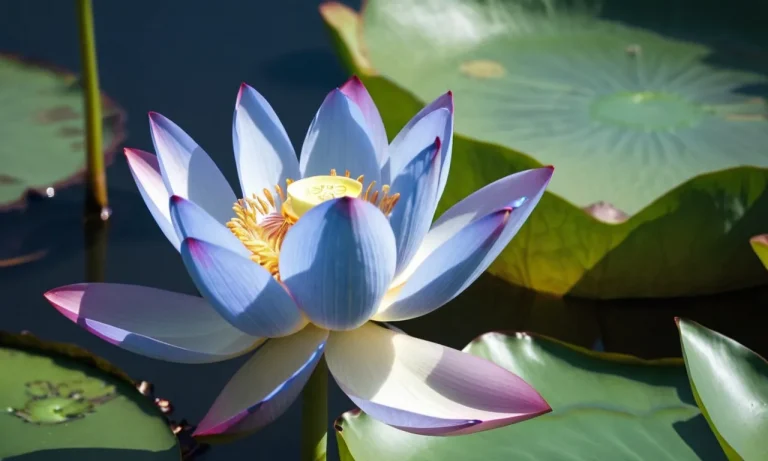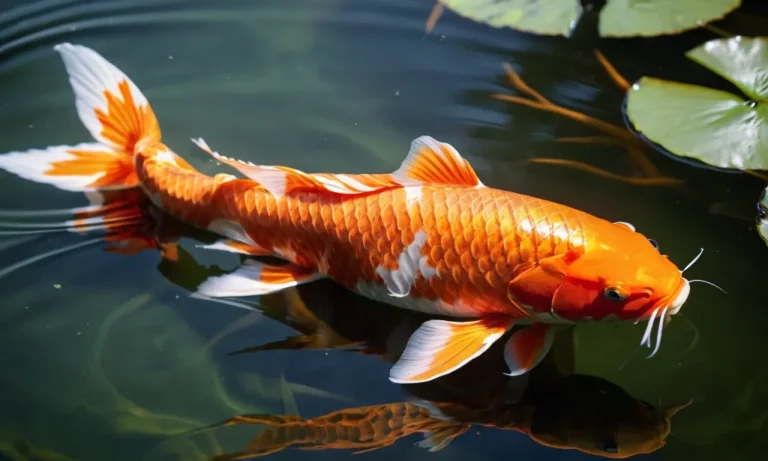The Venus flytrap is one of the most unique and fascinating plants in the world. With its rapid leaf movements and insect-trapping abilities, this carnivorous plant often captures people’s imaginations.
If you’re short on time, here’s a quick answer to what the Venus flytrap spiritually represents: The Venus flytrap is most commonly seen as representing survival, adaptation, opportunism, and defiance of adversity.
The Venus Flytrap’s Physical Characteristics and Behaviors
Unique ‘trapping’ leaves
The Venus flytrap (Dionaea muscipula) has unique leaves specialized for trapping insects, featuring two reddish lobes with teeth-like spikes lining the edges. These lobes can rapidly close together, snaring unfortunate insects that land on the trigger hairs inside.
When the plant’s prey struggles to escape, this movement further stimulates the Venus flytrap to tightly seal the trap and digestion begins. Researchers have discovered that the rapid closing of the lobes requires a specialized geometric structure and tissue architecture in the leaves to enable such speed and force (up to 0.3 seconds to close and 0.15 seconds on repeat stimulation!).
Truly an amazing feat of natural engineering.
Rapid movement when stimulated
The lobed trapping leaves of the Venus flytrap plant are specially adapted to detect, enclose, and digest insect prey. An unsuspecting bug that lands on the leaf triggers sensitive hairs lining the inner lobes.
This stimulation causes the plant to immediately snap its trap closed through a rapid cellular process scientists call an “action potential.” Unlike animals, plants lack muscles or neurons. So how does the Venus flytrap manage to move so quickly?
Researchers found the plant uses electrical signals and hydraulic pressure to rapidly change the leaf’s shape from convex to concave. Closing speeds can reach up to 100 mm/s, making the Venus flytrap one of the quickest plants around.
Digestion of captured insects
After snaring its helpless prey inside the closed lobes of its modified leaves, the ingenious Venus flytrap begins secreting digestive enzymes to absorb nutrients from the insect victim. The plant specifically produces enzymes like proteases, phosphatases, ribonucleases, and chitinases to break down proteins, phospholipids, RNA, and the chitin exoskeletons of its catch.
Scientists found that minimum mechanical stimulation (such as an insect struggle) is required to trigger digestion and nutrient absorption. Interestingly, the same glands used for digestion are also used for prey attraction by secreting sweet nectar. What a crafty plan 😉 !
The whole insect-trapping process takes about 10 days, after which the leaf reopens and waits for its next victim.
Researchers continue unraveling the exotic secrets behind the carnivorous habits of the captivating Venus flytrap. Whether studying its hinged jaw-like leaf lobes, sensory-triggered “nerve” impulses, or sticky digestive chemistry, scientists across disciplines agree: this botanical bug-eater exhibits astounding natural innovation through specialized structure and function!
Symbolic Meanings of the Venus Flytrap
Overcoming Hardship
The Venus flytrap is often seen as a symbol of overcoming hardship and adversity. Despite growing in nutrient-poor soil, the Venus flytrap has adapted to survive and thrive by developing carnivorous trapping mechanisms to obtain nutrients.
This inspires the spiritual meaning of perseverance through difficult circumstances.
Some key symbolic meanings tied to overcoming hardship include:
- Resourcefulness – finding innovative ways to tackle challenges
- Determination – persisting through struggles to fulfill your highest potential
- Courage – facing difficulties head-on with bravery and resilience
Power and Dominance
The distinctive trapping and digestive mechanism of the Venus flytrap radiates a sense of power and dominance. As an apex consumer in its ecosystem, the plant embodies attributes of strength, wholeness and self-sufficiency.
When the traps snap shut on an insect, it highlights the Venus flytrap’s formidable capabilities. This lends symbolic meanings like:
- Confidence to tackle problems head-on
- Decisiveness in discernment and action
- Wholeness and independence within oneself
Opportunism
The Venus flytrap leverages opportunity and takes action at the right moment for sustenance and survival. This opportunistic adaptation strategy offers spiritual inspiration to make the most of chances and blessings that come your way.
Key symbolic meanings embodying opportunism include:
- Seizing moments
- Taking bold action when the time is right
- Gaining sustenance from each opportunity and experience
As an ephemeral plant, the Venus flytrap’s traps only remain open for about a week, snapping whenever prey becomes available. This inspires us to embrace each moment and possibility it presents fully and mindfully.
The Venus Flytrap in Culture and History
Early botanical drawings and descriptions
The earliest known drawing of the Venus flytrap comes from the late 1700s and early 1800s, when botanists first encountered this unusual carnivorous plant in the bogs and savannas of North and South Carolina.
These early naturalists marveled at the plant’s ingenious traps and “jaws,” painstakingly sketching and describing them in nature journals. Notable examples include William Bartram’s drawing from 1791, when he proclaimed “I beheld with wonder and astonishment beyond all conception this most extravagant and unaccountable production of nature.”
The shock and curiosity elicited by the Venus flytrap has scarcely diminished over the last 200+ years!
Appearing in art, film and literature
With its carnivorous habits and unusual form, the Venus flytrap has captured imaginations. It has made memorable appearances in art, literature, film, and other media over the years. Some of the more notable examples include:
- Surrealist painter Salvador Dali’s 1945 work The Temptation of Saint Anthony, depicting Saint Anthony tormented by various hallucinations, including a large Venus flytrap
- Science fiction writer John Wyndham’s 1951 novel The Day of the Triffids, featuring dangerous fictional plants reminiscent of the Venus flytrap
- The cult horror film The Little Shop of Horrors from 1960, starring a giant talking Venus flytrap named Audrey II that feeds on human blood
Clearly something about the predatory nature and eccentric appearance of the Venus flytrap captures creative imaginations! We may continue to see it pop up in “monster plant” stories and visual media looking for something bizarrely botanical.
Modern scientific study
While the Venus flytrap intrigued scientists and naturalists for centuries, researchers have more recently used cutting-edge technology to uncover the plant’s secrets – especially how its trap actually works to capture and digest insect prey!
| Decade | Scientific Development |
|---|---|
| 1970s | Scientists uncover the electrical signals and mechanism behind the snapping trap |
| 2000s | Researchers sequence the Venus flytrap genome to identify its insect-digesting genes |
| 2010s | Engineers develop synthetic Venus flytrap robots based on how the plant moves |
This table gives a small sampling of major discoveries. What we think of as just another interesting carnivorous plant has led scientists to big breakthroughs in fields like electrical signaling, genetics, and biomimicry!
Who knows what other as yet unlocked secrets the intriguing Venus flytrap holds?
Interpreting the Spiritual Wisdom of the Venus Flytrap
The fascinating Venus flytrap plant holds profound spiritual symbolism and meaning for those seeking inner growth and transformation. This vibrant green plant has leaves specially adapted to capture insects, closing quickly when triggered to ensnare its prey.
In many spiritual traditions, plants and nature represent the physical realm, while the soul and spirit connect us to the divine. The Venus flytrap’s extraordinary carnivorous abilities offer enlightening metaphors about nurturing our inner light and shadow sides to achieve spiritual wholeness.
Facing Life’s Challenges with Courage
The way the Venus flytrap bravely turns life’s difficulties into nourishment parallels the courage we must summon to face adversity on our spiritual paths. Just as the plant converts insects from threats into fuel for growth, we can transform trials into catalysts for inner expansion.
With faith and fortitude, we can emerge wiser and more resilient.
Discerning Truth from Illusion
The plant’s ingenious trap mechanically discerns food from other triggers, snapping shut only when specific interior hairs detect viable sustenance. This offers a meaningful lesson about using spiritual discernment to differentiate truth from illusion on our journeys toward enlightenment.
By cultivating presence and intuition, we gain clarity, just as the plant relies on its sensing hairs.
Integrating Light and Shadow
While the Venus flytrap appears beautiful, its survival depends on predation of smaller insects, representing a fusion of light and shadow elements. In spirituality, we aim to integrate our higher and lower natures with wisdom and compassion.
By acknowledging all aspects of ourselves with radical self-acceptance, we find inner unity, harmony and peace.
Death and Rebirth
Each time the Venus flytrap captures and digests an insect, it represents a miniature cycle of death and rebirth. Out of decay, new life blooms even more vibrantly. When we find the courage to face necessary endings, we create space for wondrous new beginnings aligned with our soul purposes.
Every transition, no matter how difficult, carries the seed of renewal.
By contemplating plants like the Venus flytrap, which bridge material and spiritual realms, we gain inspiration to grow in self-awareness and move closer toward the light of expanded consciousness.
Conclusion
The peculiar Venus flytrap provides much symbolic meaning for those interested in its spiritual wisdom. Most predominantly, this plant represents the ability to adapt and survive against all odds, making use of any opportunity that presents itself.
Additionally, the flytrap can exemplify notions of power, dominance, opportunism, and defiance of adversity through its unique trapping abilities. As we continue studying and appreciating this captivating plant, more spiritual insights will likely arise about its place in nature’s mystical web of life.






